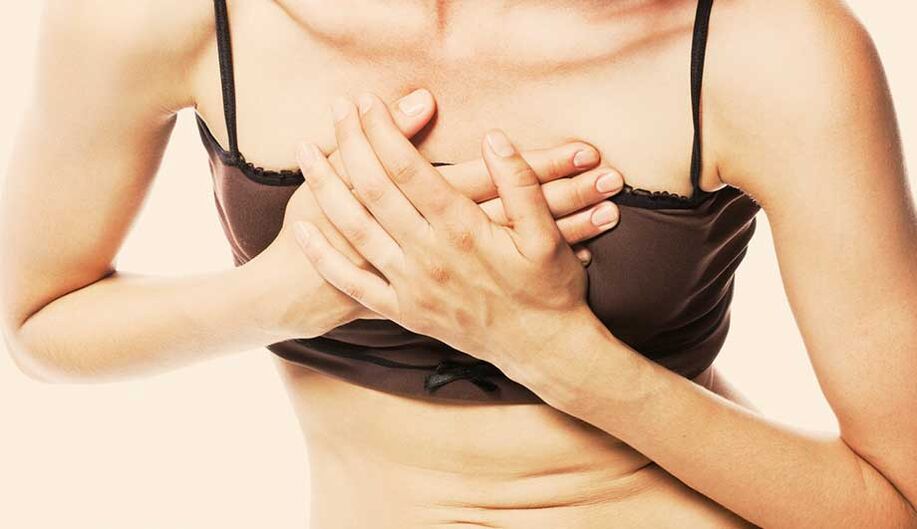Osteochondrosis is a very dangerous disease. It occurs imperceptibly and develops from mild discomfort to severe spinal disease, sometimes leading to disability.

Therapists, neurologists, orthopedists, vertebral surgeons and other specialists are all involved in the treatment of this disease.
Symptoms and feelings of chest osteochondrosis
Thoracic osteochondrosis is less common than cervical or lumbar osteochondrosis. The thoracic spine is less mobile and more protected. The difficulty of recognizing symptoms complicates the disease, which can then lead to many other diseases.
One of the main causes of osteochondrosis in the chest is the presence of scoliosis in humans. As the spine is bent, the pressure on the vertebrae increases, and the intervertebral disc in the intervertebral disc is displaced and lost. The fact that the vertebrae have changed and the metabolism and blood supply have been disrupted indicates the pain caused by this disease. This disease mainly affects sedentary people, office workers, drivers, and students.
For sternal osteochondrosis, the symptoms and feelings are divided into the main pain syndromes: back pain and back pain. Back pain is a mild chronic pain that persists, with little discomfort to the patient. Dorsago was in sudden severe pain. This happens when a person stays in a certain position for a long time and undergoes great changes. There may be shortness of breath, difficulty breathing, and poor muscle control.
Thoracic spine degenerative disc disease: symptoms and feelings are typical and atypical
Like any other disease, sternal osteochondrosis has many characteristics. List of typical symptoms:
- The pain intensifies when I inhale, rotate my body, and raise my arms.
- The pain started in one place, and then quickly spread to the entire chest. Difficulty breathing. The patient is forced to find a comfortable posture. Intercostal neuralgia occurs;
- Muscles are very tight and cramps occur regularly;
- The precursor of intercostal neuralgia is recurrent pain, back and chest discomfort when walking or exercising;
- Nocturnal pain syndrome is exacerbated, and it can completely subside in the morning. It is also obvious when the body temperature is hypothermia.
For osteochondrosis of the chest, symptoms and feelings are characteristic of other diseases. This symptom is called atypical symptom. These include:
- Similar to the painful feeling of cardiovascular disease. When taking the medicine, there is no improvement, and it may even worsen the health condition. In addition, with ECG, no changes were observed.
- For women in the acute stage of disease development, breast soreness is a characteristic. You can rule out this pathology by visiting a breast doctor.
- Sometimes, patients complain of pain similar to gastritis, ulcers, and gastrointestinal diseases. However, unlike these diseases, due to osteochondrosis, the pain increases when a load is applied rather than when eating.
- Urinary and reproductive system diseases;
- Some patients have difficulty swallowing and reflex, and have the feeling of "throat lump".
For thoracic osteochondrosis, it must be treated immediately, and self-medicinal treatment cannot be accepted. This may cause the patient's condition to deteriorate and even lead to disability. Experts can identify the typical and atypical symptoms of the disease. Qualified doctors use modern equipment to diagnose sternal osteochondrosis and treat it with the latest effective methods.
Thoracic osteochondrosis: symptoms and treatment
The hospital adopts the best plan and method to treat thoracic rickets. Medicinal methods help to eliminate the inflammatory process and relieve pain. The main method of dealing with osteochondrosis is the long-term use of chondroprotective agents. They can restore the cartilage and elasticity of the intervertebral disc. For hospital patients, the prerequisite for treatment is exercise therapy to strengthen the muscle-ligament framework. Use muscle relaxants (to relieve muscle spasms), non-steroidal anti-inflammatory drugs.
In order to maintain overall balance and improve metabolism in the body, proper nutrition must be provided. The hospital provides nutritionist and inpatient ward services, and it is much easier to maintain a healthy lifestyle during recovery than at home.
In other treatments, use:
- acupuncture;
- massage;
- physiotherapy;
- Manual therapy
- Vacuum therapy.























